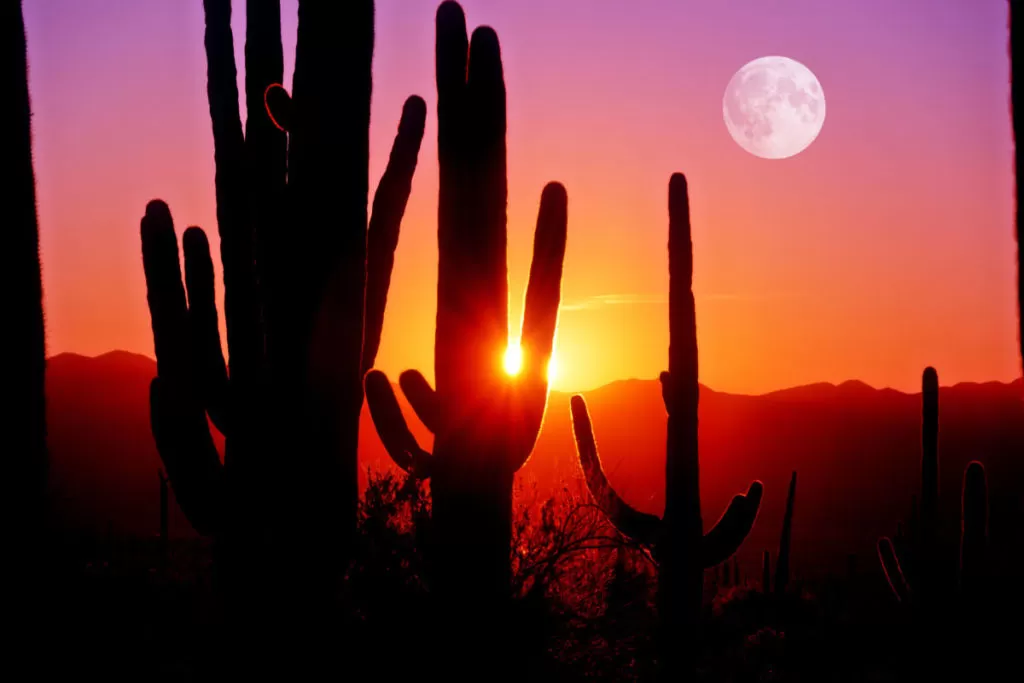Spectacular Scottsdale Sunsets
Posted on March 13, 2019 by Laura Lucky
Arizona is known for its vast expanses of azure blue skies during the day, and awe-inspiring sunsets nearly every evening. Lucky us! Ever wondered about the science behind these daily gifts from the universe? Here’s a short primer on why Arizona is blessed with such stunning skies day and night.
Visible light is composed of a spectrum of colors. Some colors, such as violets and blues have short wavelengths. The colors on the other end of the spectrum such as red, orange and yellow have longer wavelengths. When the sun is shining, those wavelengths of color pass through the molecules in our earth’s atmosphere. The amount of time those wavelengths travel through the atmosphere and are detected by our eyes depends on the length of the wavelength and how high the sun is in the sky. The sky in the early morning light, midday or dusk, as you know, looks different to us.
The colors of violet, indigo and blue have short wavelengths and take less time to pass through the atmosphere to reach our eyes. However, the human eye has trouble seeing indigo and violet, so the blue light supersedes all other colors. Thus, our eyes detect skies as blue during the day.
The colors of a sunset, with its deep hues of pink, red, yellow and orange occurs as a result of a phenomenon called scattering. When the sun is low on the horizon, sunlight must pass through more atmosphere to reach our eyes. More atmosphere means there are more molecules to scatter those short wavelengths of blue and violet away from our eyes – leaving mostly only the long-wavelength colors for our eyes to detect.
Arizona’s skies are particularly beautiful for a few reasons. Our dry climate with a lack of humidity allows for all that direct light to hit our eyes. Moisture particles (and heavy pollution) in the air will diffuse the light and mute the brightness of the colors. Further, the Desert Southwest is more dusty than other parts of the world – we can be thankful for that as far as sunsets are concerned! That dust makes those longer wavelengths such as red and orange take on a more vibrant hue at sunset.
Now go grab your favorite beverage, settle on your view deck, and take in our gorgeous skies as often as you can!


